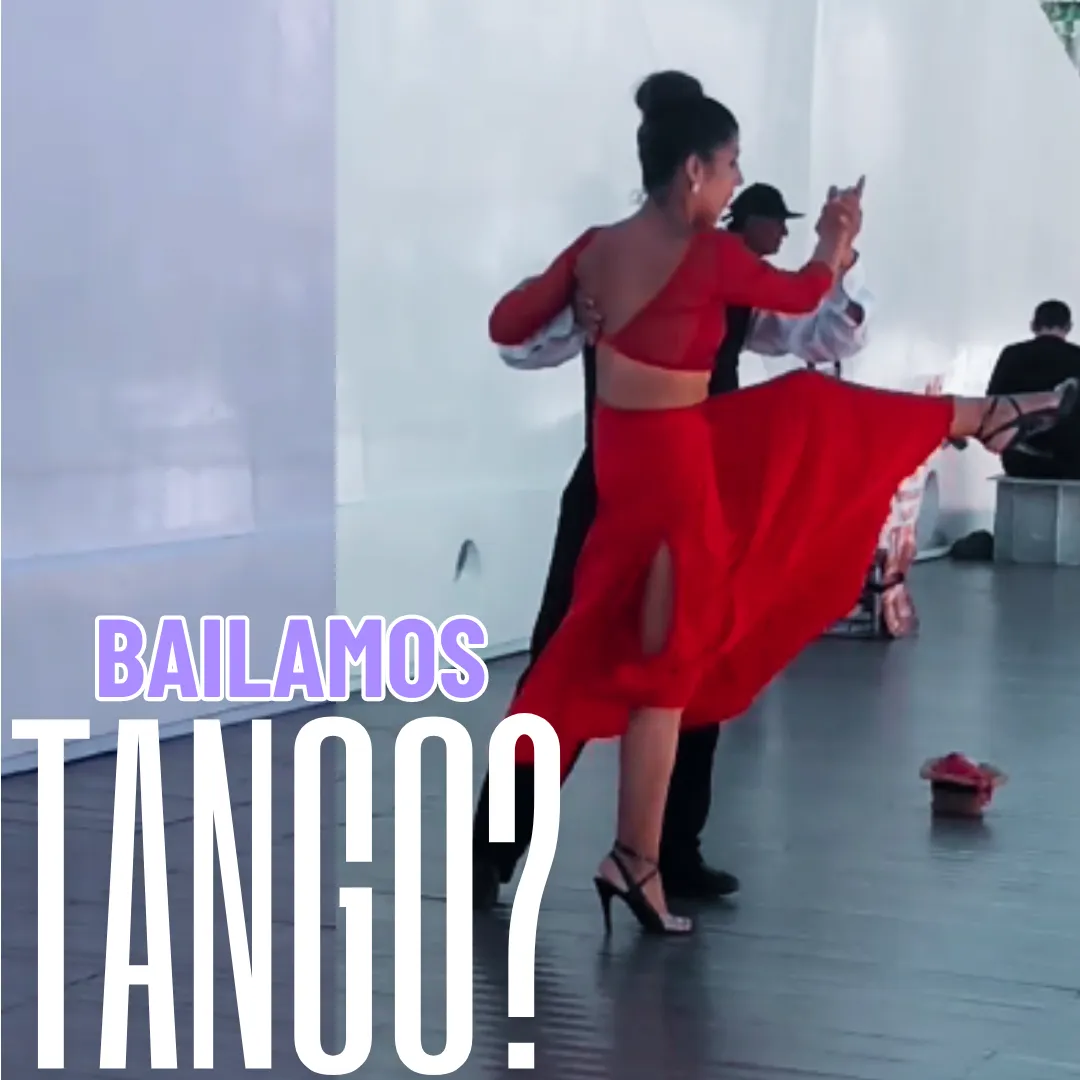Cuando en Venezuela se nombraba Argentina, en mi cabeza de inmediato venían dos imágenes: Tango y... Maradona.
Mi padre era fanático de Carlos Gardel y en casa los fines de semana se ponían los LP con su música y sonido del bandoneon se lucía entre las paredes del apartamento, así que era inevitable aprenderse algunas frases o la canción completa.
Luisa, mi abuela materna, solía decir que ella sabía bailarlo, y pues sin otra manera de verificar si era cierto o no, aprendimos que ir tomados de la mano de la pareja y caminar de pared a pared, de medio lado, y terminar lanzándose hacia atrás mientras el otro te sostenía, era la manera correcta de bailar al ritmo del tango.
Resultaba divertido bailarlo así, hasta que ya de grandes vi como se hacía realmente y pues, queda el método de la abuela como una divertida anécdota y nace en mi esa curiosidad por ver las destrezas de quienes realmente lo bailan, ya sea de forma amateur o profesional.
Al llegar a Argentina, me imaginaba que la cultura del tango estaba presente, con la ingrata sorpresa de que queda como un símbolo del país y que solo pocos tratan de mantener vivo ese legado musical y dancístico, lo cual quizás no sea suficiente, pero creo que peor es nada.
En una visita al puente de la Mujer ubicado en Puerto Madero, para mi sorpresa veo un grupo de jóvenes en plena coreografía, ayudados con la música que salía de un teléfono celular, con el suficiente volumen para que ellos pudieran seguir el ritmo, pero con unas ganas inmensas de demostrar la majestuosidad de los pasos y la elegancia que derrocha el tango.
En algún punto, el amigo @jlufer me aclara que este ritmo es propio de Buenos Aires, pero algo habrá tenido de especial que se esparció por el mundo, para terminar siendo una de las cosas con las que se identifica Argentina en el aspecto cultural.
Quizás ahora sea necesario que también se expanda en cada rincón del país, para que la magia de su ritmo y su danza, no se pierda en los recuerdos.

When Venezuela was mentioned in Argentina, immediately two images came to my mind: Tango and... Maradona.
My father was a fan of Carlos Gardel and at home on weekends, the LPs with his music would be played and the sound of the bandoneon would shine between the walls of the apartment, so it was inevitable to learn some phrases or the complete song.
Luisa, my maternal grandmother, used to say that she knew how to dance it, and well, without another way to verify if it was true or not, we learned that going hand in hand with the partner and walking from side to side, and ending up throwing yourself backwards while the other person held you, was the correct way to dance to the rhythm of tango.
It was fun to dance it that way, until I saw as adults how it was really done and well, my grandmother's method remains as a funny anecdote and my curiosity to see the skills of those who really dance it, whether as amateurs or professionals, arises in me.
Upon arriving in Argentina, I imagined that the tango culture was present, with the unpleasant surprise that it remains as a symbol of the country and that only a few try to keep alive that musical and dance legacy, which may not be enough, but I think something is better than nothing.
During a visit to the Puente de la Mujer in Puerto Madero, to my surprise I see a group of young people in the midst of a choreography, aided by the music coming from a cell phone, with enough volume for them to follow the rhythm, but with a huge desire to demonstrate the majesty of the steps and the elegance that tango exudes.
At some point, my friend @jlufer clarifies to me that this rhythm is characteristic of Buenos Aires, but it must have had something special that spread around the world, to end up being one of the things that identifies Argentina culturally.
Perhaps now it is necessary for it to also expand in every corner of the country, so that the magic of its rhythm and dance does not get lost in memories.
Credits to the Puente de la Mujer Dancers
Foto/Photo by: @mamaemigrante
Recorded with: Telephone Motorola E5
Edición/Edited by @mamaemigrante using canva
Music by JuliusH
Subtitulos realizados en kapwing
Translated and formatted with Hive Translator by @noakmilo.
▶️ 3Speak
